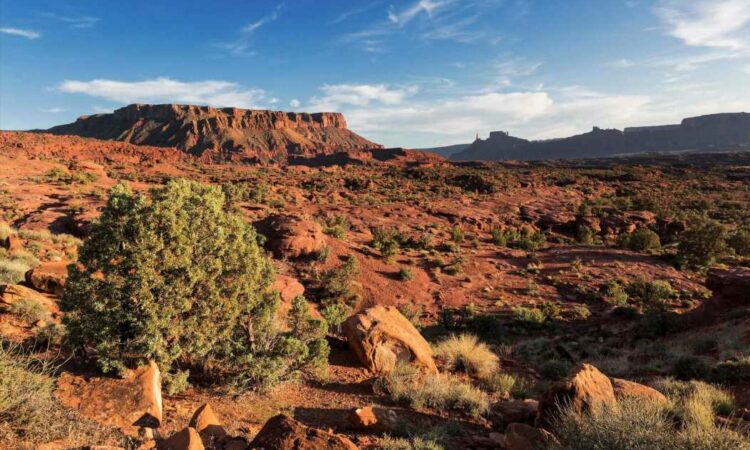In the early ’90s, paleontologists discovered bones around Moab, Utah, from an unknown dinosaur, one that had strong, deadly claws like a velociraptor—but was nearly twice as big. After years of excavating, that dinosaur became known as the Utahraptor, a feather-covered carnivore that would have stretched more than 20 feet long and weighed more than 600 pounds, according to Smithsonian Magazine. Entire skeletons have been found in Utah’s eastern region and the predator has gained so much fame that it replaced the equally imposing allosaurus as the state’s official dinosaur. And now? It has its own state park.
On March 11, state legislators passed a bill to create Utahraptor State Park, just north of Moab and adjacent to Arches National Park, in an area where many of the 100 million-year-old skeletons have been found. Around 10 additional new (to us, at least) dinosaurs have been found in the area. It will cover 6,500 acres of land, including 150 miles of existing extensive mountain biking, hiking, and ATV trails.
The park has additional historical importance: the area once housed a concentration camp, where Japanese Americans were imprisoned during World War II.
The state park status was urgently needed, according to Utah legislators. “[This land is] valuable because of the paleontology, the history, and the recreation,” said Grand County commission chair Mary McGann in a Senate committee meeting about the bill. “It is now being abused, terribly abused. It’s not only ugly—it’s also unhealthy.”
As it stands now, there are campgrounds in the area, but there are no restroom facilities or trash cans—and visitors have been making fire pits out of potentially significant rocks, McGann said. The millions of dollars that come with state park recognition will help rectify that situation and help protect the park for future visitors. (State funds will be allocated to both Utahraptor State Park and the new Lost Creek State Park, which was included in the bill and features a reservoir about an hour north of Salt Lake City.)
It will take time for the development of the state park, so don’t expect spotless recreational facilities just yet, but if you’re in the area, there are plenty of other prehistoric sites worth visiting. The future Utahraptor State Park is along the Dinosaur Diamond Prehistoric Highway, a National Scenic Byway that connects tons of kid-friendly, dinosaur-related sites, like the Utah Field House of Natural History State Park Museum, Dinosaur National Monument (which straddles the Colorado-Utah border), and a number of dinosaur quarries.
Source: Read Full Article
